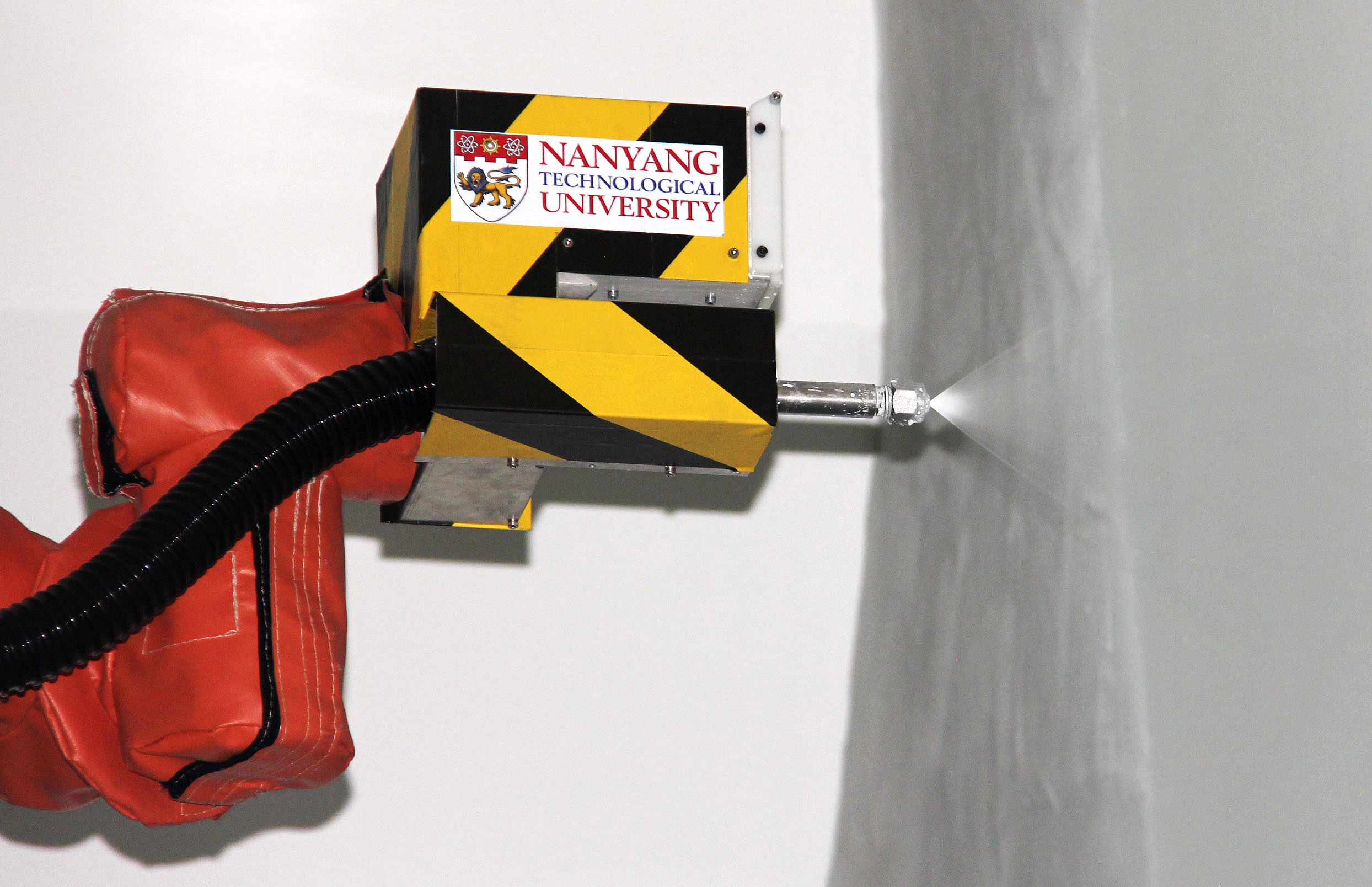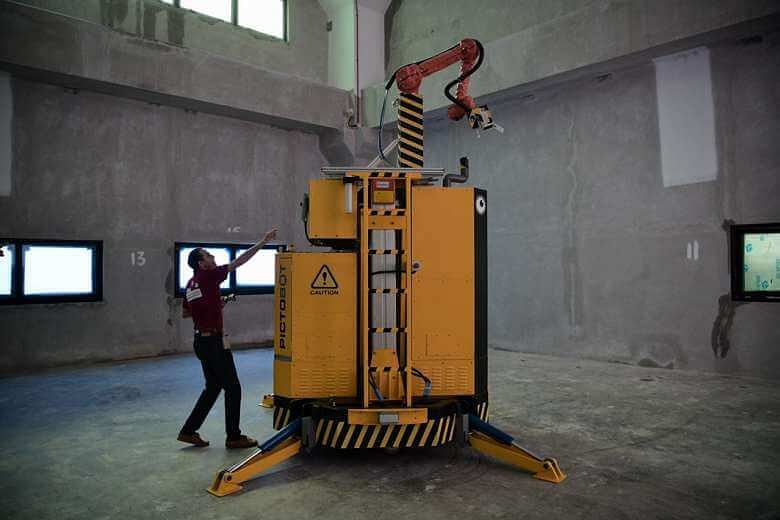Saving time and manpower with Singapore-developed spray painting robot
Sign up now: Get ST's newsletters delivered to your inbox
Yeo Sam Jo
Follow topic:
SINGAPORE - Industrial buildings will soon get a new painting robot that can paint walls faster and safer.
The PictoBot, invented by scientists from the Nanyang Technological University's Robotic Research Centre, can spray paint high interior walls 25 per cent faster than two humans.
For instance, a 90 sq m wall usually takes more than 90 minutes for two men to spray paint. But the PictoBot, which weighs 1.5 tons when fully loaded with paint and 12 batteries, can do so within an hour.
Using an optical camera and laser scanner, it can automatically scan its surroundings and navigate walls up to 10m high with its six-axis robotic arm and automated jack-up platform.


The machine, which measures 2m by 2m by 3.5m, was developed in a year with JTC Corporation and local start-up Aitech Robotics and Automation, with funding from the National Research Foundation Singapore.
Many industrial buildings come with high ceilings to accommodate bulky equipment and materials. Currently, painting these walls requires at least two painters using a scissor lift, and working at such heights exposes painters to safety risks.
But the PictoBot, which can run for four hours on one battery charge, requires only one human supervisor and can even operate in the dark.
To ensure that the robot's functions are comparable or better than industry standards, it will next be tested at industrial developments such as JTC Space @ Gul.
The testbedding phase will be done jointly with engineers at the NTU-JTC Industrial Infrastructure Innovation Centre, a research centre which aims to tackle challenges such as safety and manpower constraints.
Mr Anil Das, director of JTC's innovation programme office and corporate planning, said the robot helps to mitigate risks of painting at height.
"In addition, it helps to reduce labour-intensive work, thus improving productivity and ensuring the qualitybof interior finishes," he added.
Principal investigator of the project Professor Chen I-Ming, director of the NTU Robotic Research Centre, said the PictoBot has a higher quality of finish compared to current painting methods.
"Painting large industrial spaces is repetitive, labour intensive and time-consuming," said Professor Chen. "The autonomous behaviour also means that a single operator can handle multiple robots and refill their paint reservoirs."
The PictoBot, named after pictor, the Latin word for painter, can currently house 120 litres of paint before it is refilled, Professor Chen said.
His team will continue to look at improving the robot, such as enabling it to replace its own paint cans and paint in more than one colour. He added that they are considering rolling out the use of the robot to non-industrial buildings, although more testing is needed in the meantime.
The National Research Foundation, which supported the project through its test-bedding and demonstration of innovative research funding initiative, did not reveal the cost of developing the robot. But it said that a funding of up to $1 million is provided for each project under the initiative.

